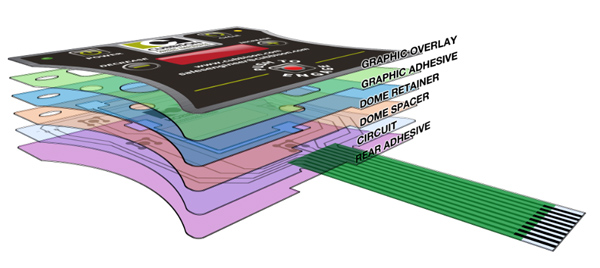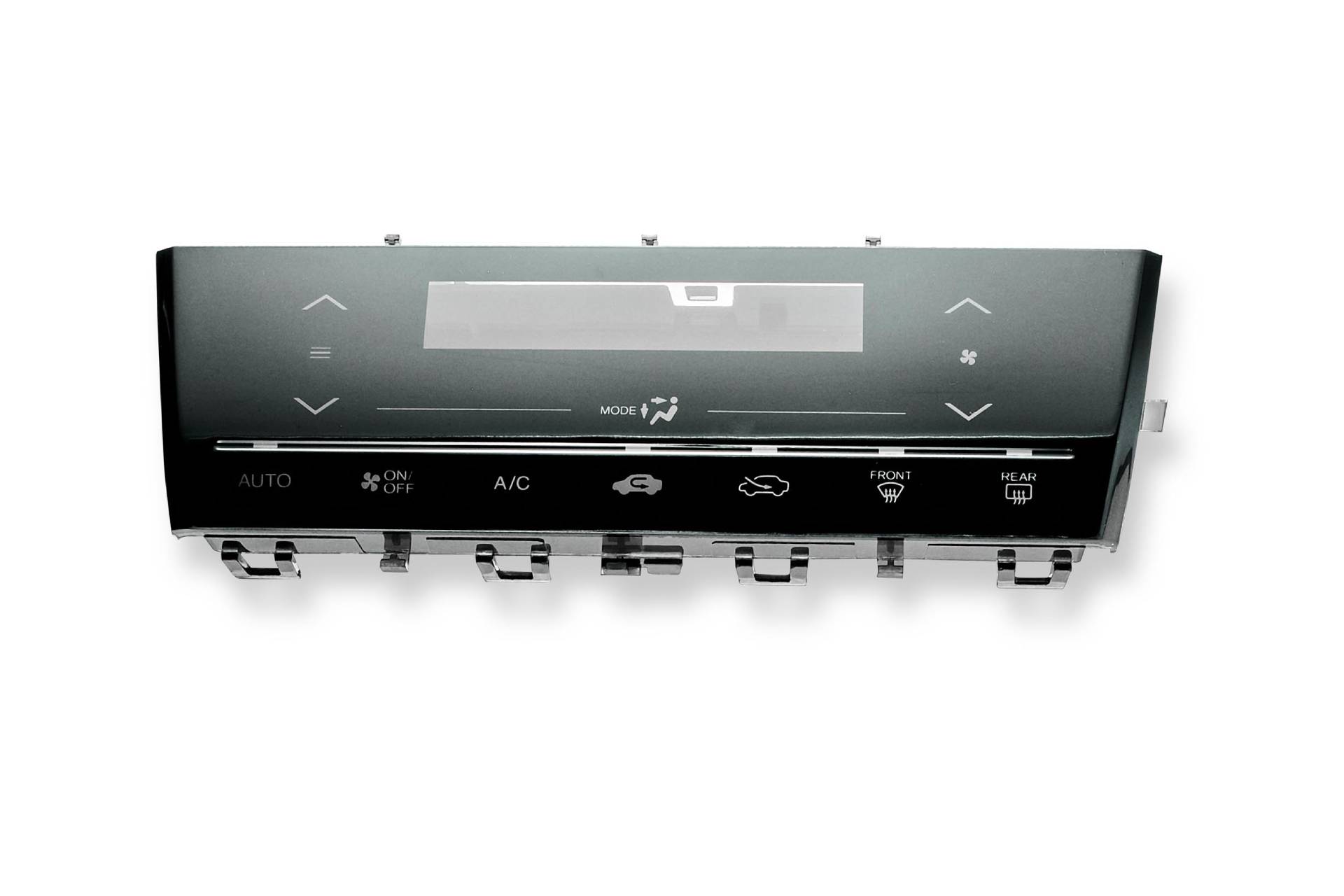Membrane Switch Manufacturer Focused on User-Centered Design
Comprehending the Relevance of Membrane Switch in Modern Electronics and Their Applications
Membrane switches act as a vital part in modern electronics, offering an efficient interface for individual communication. Their lightweight and adjustable nature makes them appropriate for an array of applications throughout diverse sectors. Comprehending their essential parts and benefits can provide insights into their growing importance. As innovation remains to breakthrough, the advancement of Membrane switches over questions regarding their future applications and layout technologies. What lies ahead in this dynamic area?

What Are Membrane Switches?
Membrane switches are crucial elements in modern electronic devices, acting as user interfaces that facilitate communication between gadgets and customers. These buttons contain numerous layers, including a visuals overlay, an adhesive layer, and a circuit layer, every one of which interact to develop a durable and practical user interface. The layout enables a level, inconspicuous remedy that can be personalized pertaining to size, shape, and visual look, making them ideal for various applications, from customer electronics to clinical tools. The tactile feedback supplied by Membrane switches over enhances customer experience, while their resistance to dust and moisture makes them suitable for testing environments. Additionally, Membrane buttons can include features such as backlighting and printed graphics, additionally increasing their use. Their versatility and robustness make them a preferred option in markets where dependability and simplicity of usage are paramount, eventually adding to the smooth procedure of modern electronic devices.
Key Components of Membrane Switches Over
While numerous parts contribute to the functionality of a membrane switch, three main layers play significant roles in its design and procedure. The top layer, usually made from a long lasting polymer, works as the user interface for individual interaction, frequently featuring published graphics and icons. Beneath this is the spacer layer, which keeps the necessary range in between the top layer and the circuit layer. This spacer layer guarantees that the button activates just when pressed, avoiding unexpected inputs. The circuit layer includes conductive traces that complete the electrical circuit when the top layer is depressed. These traces can be made from various materials, including copper or silver. Together, these components produce a reputable and robust device that is small and versatile, appropriate for a broad range of electronic applications, from home devices to medical tools. Understanding these essential components is vital for appreciating the general functionality of Membrane switches.
Benefits of Using Membrane Switches

Membrane Switch Production Process
Understanding the Membrane button production procedure reveals the elaborate actions involved in creating these important parts. The procedure typically begins with the style stage, where layouts and requirements are developed utilizing specialized software program. Following this, the graphic overlay is published on a flexible substratum, frequently making use of high-resolution printing techniques to guarantee clearness and precision.Next, the sticky layers are applied, which serve to bond the various parts with each other. The circuit layers, made from conductive inks or products, are after that published onto a separate substrate. These layers are very carefully straightened and laminated flooring to create a functional switch.After assembly, the buttons undergo checking to verify functionality and durability. Quality assurance steps are carried out throughout the procedure to recognize and correct any kind of flaws. The completed Membrane switches are packaged and prepared for distribution, ready to satisfy the demands of contemporary digital applications.
Applications of Membrane Switches in Various Industries
Membrane switches are significantly used across different markets, specifically in clinical devices and consumer electronics. In the clinical area, they provide reputable control interfaces for gadgets that need specific procedure. Similarly, in consumer electronic devices, these switches improve user communication by supplying streamlined and responsive interfaces.
Medical Tools Control
Countless modern medical devices make use of Membrane switches for streamlined operation and boosted user communication. These switches provide a trusted, sturdy interface for a range of applications, including diagnostic tools, client tracking systems, and surgical tools. Their adjustable styles enable specific formats that can suit the company website special requirements of healthcare experts, making sure user-friendly navigating and effective access to important functions. Furthermore, Membrane switches are resistant to pollutants, making them suitable for sterile settings. The tactile feedback they provide can boost individual self-confidence, minimizing the danger of mistakes during crucial medical procedures. Generally, the combination of Membrane buttons in clinical tools significantly adds to boosted operational efficiency and individual safety and security in healthcare setups.
Consumer Electronic Devices Interfaces
In the domain name of consumer electronic devices, Membrane buttons play a crucial role in improving user interfaces throughout a variety of gadgets. These switches are important to products such as push-button controls, microwaves, and video gaming consoles, giving a user-friendly and efficient interface. Their design permits a smooth integration of graphics and performance, allowing makers to create smooth, modern-day looks without compromising usability. Membrane switches are likewise known for their sturdiness, usually enduring comprehensive use and exposure to different ecological conditions. Additionally, they can incorporate attributes like backlighting and tactile responses, additional boosting the user experience. As consumer needs for sophisticated yet intuitive interfaces grow, Membrane switches continue to be an essential element ahead of time electronic device performance.
Design Considerations for Membrane Changes
Designing effective Membrane changes requires careful interest to numerous variables that influence both capability and customer experience. One essential factor to consider is the selection of products, as they can influence longevity, responsive comments, and aesthetic allure. Choosing an appropriate adhesive is essential for ensuring long-term adhesion and resistance to environmental factors.In enhancement, the layout and layout of the button have to accommodate user interaction, with button dimensions and spacing optimized for ease of usage. The consolidation of graphics and labeling ought to focus on clarity and visibility under various illumination conditions.Consideration of electric features, such as actuation force and switch level of sensitivity, will certainly boost the responsiveness of the Membrane switch. The layout must accommodate manufacturing processes to guarantee cost-effectiveness and timely production. Generally, a well-thought-out design boosts both the user and the capability experience of Membrane switches in contemporary electronics.

Future Fads in Membrane Switch Technology
As technology remains to progress, Membrane buttons are positioned to incorporate brand-new developments that will boost their functionality and application in various fields. One considerable pattern is the consolidation of flexible and sturdy products, which will enhance the life expectancy and discover this reliability of these switches. Enhanced surface area appearances and adjustable graphics are additionally expected, permitting more user-friendly individual interfaces.Moreover, the assimilation of wise modern technology, such as touch-sensitive surface areas and haptic comments, is expected to improve user communication, making Membrane switches extra appealing and responsive. find out here Additionally, developments in published electronics will certainly make it possible for a lot more complex circuitry within thinner profiles, additionally broadening style possibilities.Sustainability will certainly additionally play a vital function in future advancements, as manufacturers discover green materials and production processes. Overall, these fads will certainly ensure that Membrane changes remain important and relevant in a significantly electronic and interconnected world.
Regularly Asked Questions
Exactly How Do Membrane Switches Compare to Conventional Mechanical Buttons?
Membrane switches over offer benefits over conventional mechanical switches, including minimized dimension, lighter weight, and improved resilience. They usually give a sealed surface, improving resistance to dirt and dampness, making them ideal for varied applications.
What Materials Are Generally Utilized in Membrane Switch Building And Construction?

Can Membrane Changes Withstand Extreme Environmental Conditions?
Membrane buttons can withstand severe environmental conditions, depending upon their style and products. High-grade building and constructions frequently feature durability against temperature level changes, humidity, and exposure to chemicals, making them appropriate for various demanding applications throughout sectors.
The Length Of Time Do Membrane Changes Normally Last Prior To Failing?
Membrane switches over generally exhibit a life expectancy ranging from 1 to 10 million actuations, depending upon elements such as use frequency, ecological problems, and manufacturing high quality. Regular upkeep can prolong their resilience and functional integrity significantly.
Are Membrane Changes Personalized for Specific Applications?
Membrane switches are undoubtedly personalized for certain applications. They can be customized in functionality, design, and dimension, allowing producers to fulfill special customer requirements and boost product looks while maintaining operational performance and toughness. Membrane buttons are essential parts in modern electronics, offering as customer interfaces that assist in interaction between gadgets and individuals. The tactile feedback provided by Membrane changes enhances customer experience, while their resistance to dust and moisture makes them excellent for challenging atmospheres. The unification of graphics and labeling need to focus on clarity and exposure under numerous illumination conditions.Consideration of electrical features, such as actuation force and button level of sensitivity, will boost the responsiveness of the Membrane button. Boosted surface structures and personalized graphics are also anticipated, permitting for even more intuitive individual interfaces.Moreover, the combination of clever innovation, such as touch-sensitive surfaces and haptic comments, is expected to improve individual interaction, making Membrane switches much more receptive and interesting. Membrane switches deal advantages over conventional mechanical buttons, including lowered dimension, lighter weight, and enhanced toughness.